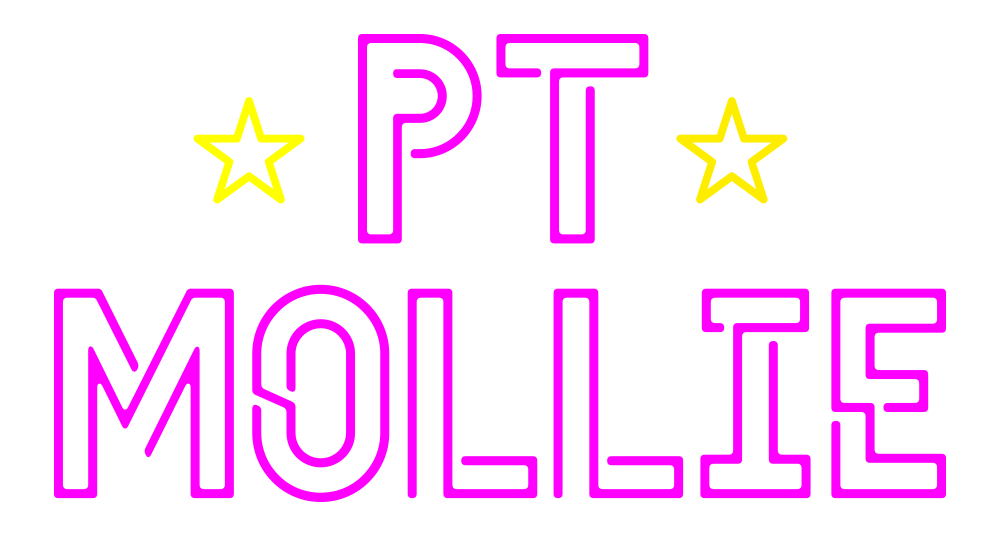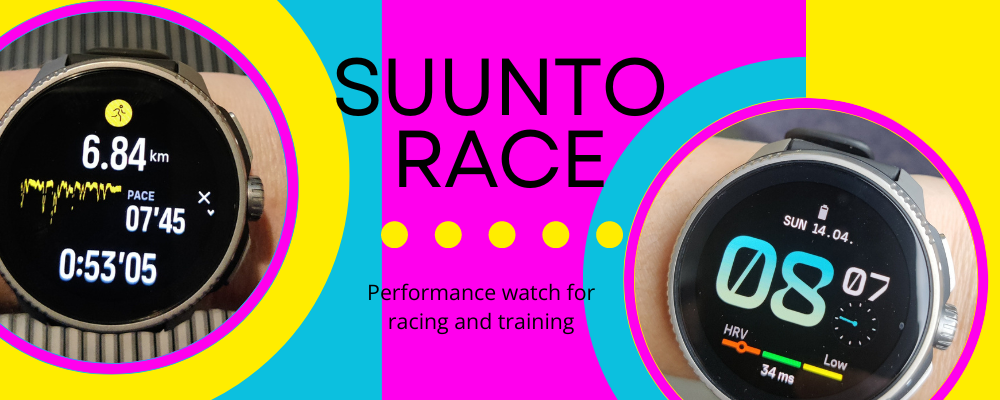For the last 5 years, I have been wearing my Suunto 5 nearly 24 hours a day. I invested in the watch after my desert ultra, where I had to switch between watches as there was no where to charge them. Technology is not my strongpoint, meaning I have simple needs when it comes to a GPS watch. My priorities are it being waterproof (for work, although I take it off when I shower), long battery life (I want to charge is less than once a week), different sports modes (my running, indoor cycling, paddle boarding, etc), GPS accuracy (if it’s not on Strava, it doesn’t count!), heart rate (to keep me in the correct zone), and ideally good sleep monitoring.
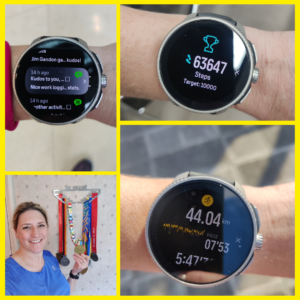
Suunto watches also have fantastic map features, including bread crumb trails to retrace your steps and the ability to upload maps. I have yet to try either of these as I mostly stick to paved roads when I am out running. #adventurestartshere is Suunto’s motto and my Suunto 5 made it to Antarctica and back. See my Strava profile to look at where I walked and camped on my 7th continent. I also noticed last week that there is also a digital compass and will be trying it out as I prepare for my National Three Peaks challenge and coastal navigation.
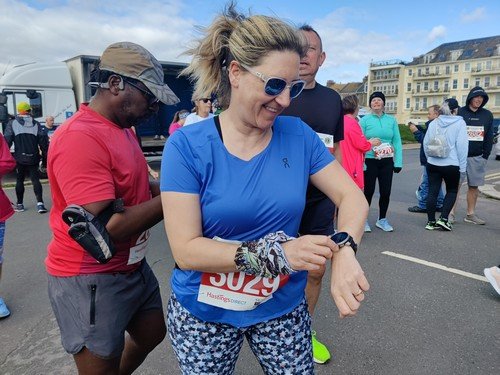
The Race was released in the autumn of 2023 and I was lucky enough to be loaned one for the last two months of marathon training before Tokyo. It is a little larger than my Suunto 5 which means it dominates my dainty wrist. Personally, I find the large bright display easy to read when I am running or teaching indoor cycling. On the way to Japan, I could tell who was a runner by the size of their watch and fancy trainers on their feet. I fit right in! The Race display will flash up when you move your wrist which is a helpful way to preserve battery. You can also have a ‘quiet mode’ where the display will not show with movement so it doesn’t wake you up at night. I charge the watch every other week when I am not marathon training. During the last two months before Tokyo Marathon, I had to charge it once a week.
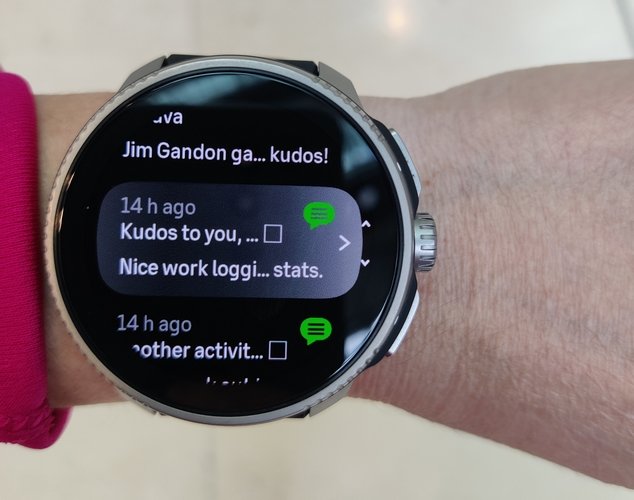
Like the 5, you have to sync your watch to the Suunto app to log your workouts, which can then be automatically uploaded to Strava if your accounts are linked. The Suunto app also allows you to track friends and comment on their workouts. With the Race, I used the Bluetooth connection to receive notifications when out on morning runs before work. This saved me from having to pull my phone out of my running vest every time I heard a notification go off (we use Whatsapp to let each other know if we are running late or first the first person in has a question). You can also receive mobile notifications and adjust your music playlist via the watch.
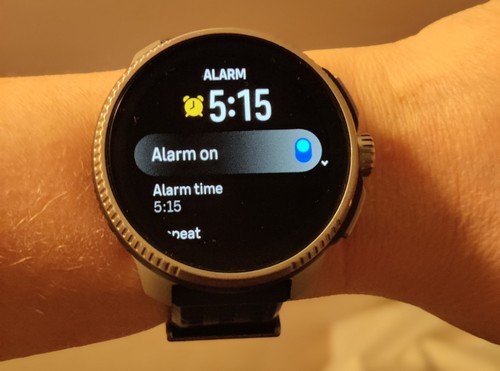
The alarm feature was very handy in my capsule hotel the last night I was in Japan. We were not allowed to use alarms as to not disturb the other hotel guests. My friend suggested I set my watch to vibration mode and that did the trick.
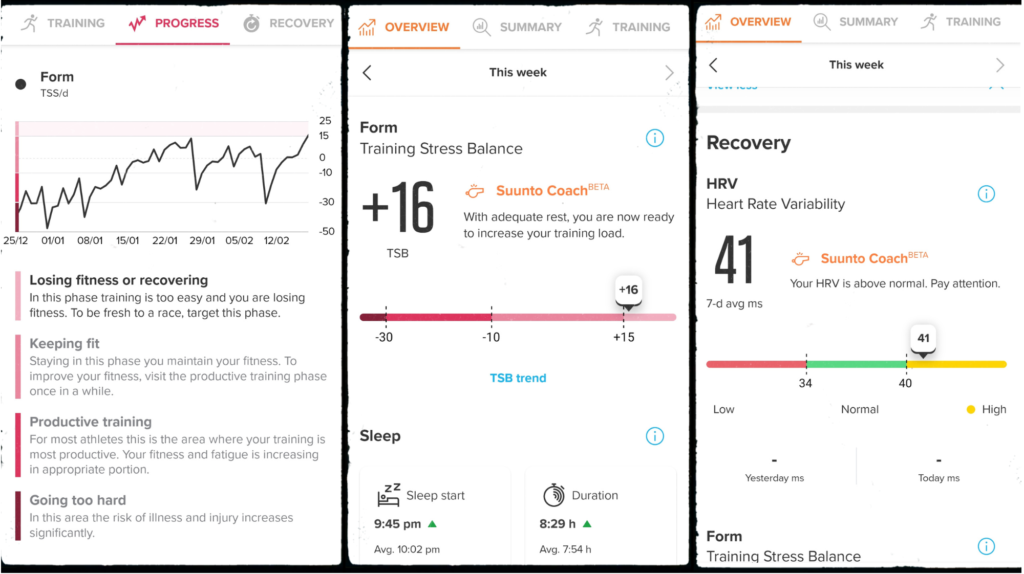
Just before Easter, I caught a cold that was going around work that lasted 2.5 weeks (which is why this post is so delayed!). I found the Race to be incredibly helpful in justifying whether I should rest or not (it was usually rest). Suunto has their own algorithm for training and recovery: Chronic Training Load, Fatigue Acute Training Load, and Training Stress Score (which is the difference between these two scores). Aside from this, it also counts steps, burned calories, heart rate, sleep, resources. Recovery is monitored by heart rate variability. Sunnto says “If your HRV values consistently fall below your normal range, it is an indication of a compromised recovery state. This could be caused by chronic stress, inadequate sleep, overtraining, or an underlying health condition.” If you wear your watch 24/7, including when you sleep, the available data will be much more accurate and help you maximize your training plans. Looking at FORM (left side of above photo) shows your progress. You can see here that in my 3rd month of marathon training, I began to improve my fitness level (finally!). My Training Stress Score (middle of above photo) gives me the green light to start training while the heart rate variability (right side of photo) indicates that more rest may be needed. Note these screenshots are all from different dates so cannot be used in reference to each other. Hopefully you can see how each piece of data can be applied as an indication of how to proceed with your training.
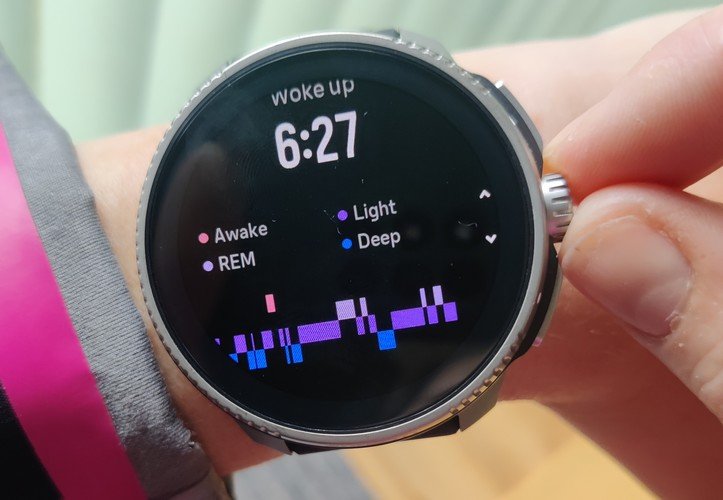
Last week I discovered that the sleep monitoring is more in depth than I originally thought. It has a visual display on the watch itself of how much sleep is spent in different cycles, deep, REM, and awake. I always threaten to wake James up every time I do but he will probably relate better to a graphical representation. Being perimenopausal, sleep is a challenge. If I drink too much alcohol, I don’t sleep well. Body temperature can also influence my sleep. Being able to track my sleep quantity and quality will be useful in determining what impacts my rest and lead to a positive behavioural change.
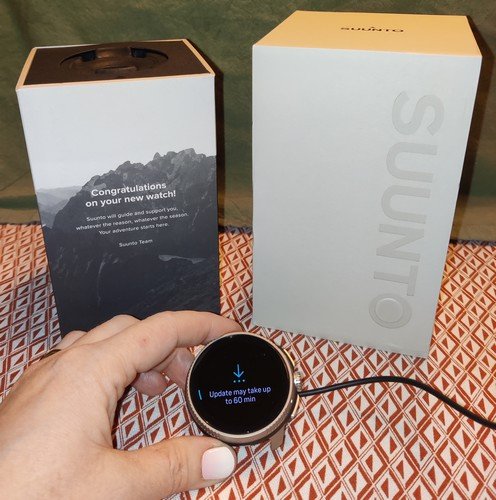
Wearing this watch, I can 100% say #AdventureStartsHere. It was so useful while marathon training and then overcoming a cold while training to maintain my fitness for the National Three Peaks challenge which I am completing in late June. I know the mapping and compass features will be essential as I complete some intense day hikes over the next two months. Feel free to join me at Wild Goat Festival at the end of May for hiking, running, and gravel biking, along with talks and music. Use MOLLIEMILLI15 for 15% off your tickets and enjoy the outdoors with me.
Do you prefer to run with a GPS watch or ‘naked’? What data produced by your watch do you refer to most? Let me know in the comments below?
